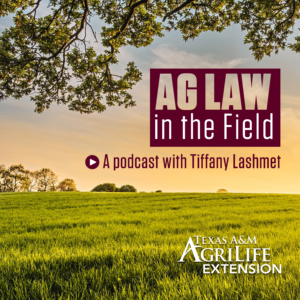The El Paso Court of Appeals recently enforced a liability waiver against a party injured when she fell off a horse in Green v. Lajitas Capital Partners, LLC. [Read Opinion here.] This case is a great reminder about the law surrounding liability waivers and how they can be an important part of a risk management plan.

Photo by Alexandre Trouvé on Unsplash
Background
In June 2020, Sherri Green and other members paid to go on a sunset trail ride at Lajitas Resort. Prior to the ride, Sherri signed a release that was labeled in bold, capital letters. The release noted a number of potential risks, which Sherri initialed, and then provided that she waived any claims, including negligence claims, against the Resort.
The ride began and ended at the stables. On the return to the stables, the group was walking next to the golf course, when the underground sprinklers activated making a hissing sound that spooked the horses. Sherri fell off her horse, resulting in bruises and a fractured wrist. The guide testified that Sherri’s horse “sped up for a few steps” when the sprinklers went off and Sherri fell off. Sherri and her husband testified that her horse “bucked wildly” and violently threw her off.
Sherri filed suit against the Resort and other related defendants claiming she was an invitee and their negligence caused her injury. In particular, she claimed the sprinklers were a “dangerous latent condition of land” and the defendants failed to guard against the danger by allowing the horses to come close to the sprinklers knowing they were about to activate. The defendants filed a motion for summary judgment on two grounds. First, they claimed that Sherri signed a release prior to the ride releasing them from liability for negligence. Second, they raised the Texas Farm Animal Liability Act (FALA) as a defense, arguing that Sherri was a participant in a farm animal activity and her injury resulted from an inherent risk of that activity.
Sherri argued the release was not valid for two reasons. First, she claimed the release only applied to occurrences arising from nature, not man-made conditions like the sprinklers. Second, she argued the waiver was “insufficiently specific” under Texas law.
Sherri argued the FALA did not bar her claim because an exception applied. Specifically, she claimed her injury was caused by a latent condition of the land for which no warning was provided to her, making the FALA inapplicable.
The trial court granted the defendants motion for summary judgment but did not indicate on which grounds it did so. Sherri appealed.
Court of Appeals Opinion
The El Paso Court of Appeals affirmed. [Read Opinion here.]
Release of Liability
Under Texas law, a release must satisfy two elements of the “fair notice requirement”: (1) express negligence doctrine; and (2) conspicuousness. The express negligence doctrine states that the intent of a party to release claims of negligence must be specifically stated in the four corners of the document. The conspicuousness requirement provides that something must appear on the face of the document to attract the attention of a reasonable person to the release language, such as the release language being in larger type, capital letters, contrasting colors, or otherwise drawing attention to itself.
Conspicuousness
First, the court addressed the conspicuousness requirement. The court noted this was not raised at trial, meaning it was not properly presented for review. However, were the court to overlook this procedural issue, it would have found the requirement satisfied. The release was labeled “Liability Release and Assumption of Risk Agreement” in bold, capitalized letters. The liability release paragraph, which she initialed, included bold, capitalized letters and large font for key provisions. These provisions, along with her initials next to each paragraph, were sufficient to alert Sherri that was releasing the defendants from a future claim of negligence with regard to injuries she might suffer on the trail ride. Sherri argued the fact that only some terms, but not the entire release, were in bold, capitalized, underlined letters rendered the release invalid. The court disagreed, noting there is no requirement that the entire release must be highlighted, and the requirement is met if the key terms are sufficiently highlighted to draw the reader’s attention to them.
Express Negligence Doctrine
Sherri argued that the release was overly broad and ambiguous and that it covered only accidents caused by natural conditions. The court disagreed on both counts.
First, Sherri claimed the release was so broad it purported to waive her right to sue for anything. However, the express negligence requires the release clearly state that the party is releasing claims for negligence, as opposed to a general statement that the party releases all claims without specifying the nature of any such claims. Here, the release did expressly state that she waived all claims, including claims of negligence, which satisfied the express negligence doctrine. Courts have held that the mention of negligence is sufficient to satisfy the doctrine.
Second, Sherri argued that the release was limited to claims caused by natural conditions. She based this on a paragraph titled “Wilderness Experience” that says the defendants are not liable for “total or partial acts, occurrences, or elements of nature and/or sudden and/or unfamiliar sights sounds and/or sudden movements that scare a horse, cause it to fall, or react in some other unsafe way.” She claimed that because “elements of nature” is not followed by a comma, it modifies everything after it, limiting the release to natural conditions.
The court disagreed. The lack of comma was irrelevant because of the “and/or” language that follows “elements of nature,” which indicates it applies to both elements of nature and other incidents caused by unfamiliar sights, sounds, and sudden movements. The court also pointed out that another sentence in the “Wilderness Experience” paragraph provides examples of both natural and man-made changes in landscape, indicating it was intended to apply to incidents caused by unfamiliar sights and sounds, regardless of source. Finally, and most importantly to the court, there were several other paragraphs other than the “Wilderness Experience” paragraph describing the negligence claims that Sherri was releasing.
Farm Animal Liability Act
Because the court found that the liability release was valid, it did not address whether the FALA also applied to bar her claim.
Potential Appeal
Do note that the deadline to file an appeal has not yet passed.
Key Takeaways
First, this case is a good reminder that having people sign a liability release before engaging in recreational activities like horseback riding is an important step towards liability protection. To read more about this, see Chapter 5 of my Owning Your Piece of Texas handbook.
Moreover, it is a great reminder of the two main requirements to ensure a liability waiver is valid: the express negligence doctrine and conspicuousness. Because liability waivers are an important part of a risk management plan, and because the law is particular about their drafting, I highly recommend working with an attorney to obtain a good, valid liability release to use for your operation.
Lastly, one takeaway that I will be adding to my own waiver is a requirement that each party sign the waiver and initial each paragraph. The court seemed to rely on the initials here in analyzing the conspicuousness requirement and cited at least one other case where the initials were noted.












